LEO ORNSTEINS Piano Sketch Books
with Downloadable MP3s Progressive Pieces from
Beginner to Intermediate LEO ORNSTEINS Piano Sketch Books with Downloadable MP3s Progressive Pieces from
Beginner to Intermediate New Foreword by Severo Ornstein Introductory Notes and MP3s by Janice Weber Dover Publications, Inc.
Mineola, New York All songs available as downloadable MP3s! Go to: http://www.doverpublications.com/0486493385
to access these files.  Copyright Copyright 2014 by The Estate of Leo Ornstein
Copyright Copyright 2014 by The Estate of Leo Ornstein
Foreword 2014 by Severo Ornstein
Introductory Notes 2014 by Janice Weber
All rights reserved. Bibliographical Note This Dover edition, first published in 2014, is a new compilation in one volume of Leo Ornsteins Piano Sketch Book: Volume I, and Leo Ornsteins Piano Sketch Book: Volume II, originally published separately by Elkan-Vogel Co., Inc., Philadelphia, in 1945. The music in this Dover edition has been newly engraved by Severo Ornstein. The Dover edition adds a new Foreword by Severo Ornstein, Introductory Notes by Janice Weber, and a comprehensive Table of Contents. International Standard Book NumbereISBN-13: 978-0-486-78332-1 Manufactured in the United States by Courier Corporation
49338501 2014
www.doverpublications.com FOREWORD Despite his image as the terror of the keyboard, my father could also be very sympathetic and gentle with children and students.
When my sister and I were very little, he made up songs that he would sing to us as we were tucked into bed at night. I was nine years old when the pieces presented here were fi rst published. I was aware of the publication because, at my request, the Lone Ranger had been included in a montage sketch on the cover. At the time I saw nothing unusual in my fathers occupation. Everyones father did something: one was a banker, another a carpenter, etc. Mine taught and wrote music.
At that age I was both unaware of, and incapable of comprehending, the illustrious career that my father had before I was born. He himself rarely mentioned his earlier life, so that understanding came only many years later. I was always aware, however, that he was a much-loved teacher. These student pieces give evidence of the care and attention that provoked such affection. Although his private students tended to be highly advanced, his instinctive understanding of, and sympathy for, the needs of more elementary students is evident here. As his own statement indicates, in order to captivate students he wanted to provide exercises that incorporated musical interest as well as technical challenge.
Of course its diffi cult to inject much musical interest into the most rudimentary pieces, but even those show evidence of his understanding of student needs. Everything is directed toward capturing the attention of the student, including the sketches that accompany many of the pieces. The first very short and simple pieces are presented in large type with great clarity and simple key signatures. Proceeding through the volume, the pieces move on imperceptibly to greater and greater notational, rhythmic, and harmonic complexity, new elements being added gradually one at a time. Especially in the later pieces, memorable tunes start to appear. Even to the sophisticated ear some of these simple tunes are surprisingly haunting evidence of Ornsteins abundant melodic gift.
There is plenty of material at all points along the way for teacher and student to pick out what appeals to them most. The addition of sound not only demonstrates what the student should aim for, but also adds incentive for learning those pieces which, for whatever reason, have particular appeal. In my own case, for example, I learned to play because I fell in love with some of the pieces Id heard my father practicing and wanted to learn to play them myself. That kind of incentive can make the difference between one who, at the age of forty, is enjoying playing, and others who instead are wishing that they had learned how. SEVERO ORNSTEIN INTRODUCTORY NOTES The beginners first transformation of notes on a page into musical sound is an unforgettable thrill that will, hopefully, last a lifetime. Teachers through the ages have sought material that provides new students with both a sense of accomplishment and an eagerness for further triumphs and complexities.
Happily, the Piano Sketch Books of Leo Ornstein meet both criteria. Although Ornstein was known for composing pieces of diabolical ferocity and virtuosity, he rarely lost sight of melody. That awareness is distilled in these works for children. With the very first note of Im Wishing (middle C, of course), the neophyte enters a world of song and imagination. Ornsteins titles and lyrics immediately call for interpretationand why not address this fundamental artistic challenge with ones very first piece? The earlier a student starts to think interpretively, to get beyond mere keyboard mechanics, the better. Ornsteins melodies also require attention to tone and phrasingtwo more lifelong challenges.
Lets get started on them early! The titles of these pieces are helpfully evocative. I have asked students to supply their own words in those pieces with none, and their responses have been extraordinary. A childs mind is a wonderfully active volcano. Some metronome markings seem fast for the beginner. I would adjust accordingly and teach the valuable lesson that metronome markings are a suggestion rather than a royal command. Capturing the spirit of the piece is far more important than merely playing up to speed.
I find Ornsteins pedal markings very, very generous, and would recommend a similarly generous application of white correction tape. Herein lies another valuable lesson for the student, namely, that elegant pedaling requires a critical ear rather than mere obedience to a score. In Part II, as the pieces become more advanced, dynamic markings become more prominent. Controlling at least four tiers of stage voice by the end of the Sketch Books would provide an excellent foundation for further artistic development. Every once in a while (in Off to the Circus, for instance, but I wont say where,) Ornstein throws a huge technical boulder into the road. Thus he kindly provides a valuable lesson in not giving up, because there are going to be a lot more pieces with similar roadblocks in every musicians future.
Wishing all many hours of enjoyment with Leo Ornsteins Piano Sketch Books. JANICE WEBER NOTE The present volumes are the result of a need I have long felt for original material that would meet the limitations of an immature hand and at the same time give the beginner a valid musical experience. An awareness of this need has been emphasized through contacts with teachers in various parts of the country. It has also become apparent that the quality of teaching in the present day has risen far above the material available for elementary use. The excellent arrangements of folk songs and classics, and their almost universal popularity for very early grades, testify to the paucity of contemporary writing for beginners. It is my hope that I have, in some small measure, contributed towards meeting this need.
A device to simplify some of the early mechanical difficulties has been to retain, as nearly as possible, a uniform accompaniment. This permits concentration upon the difficulties of one hand at a time, and yet does not jeopardize harmonic variety. Coordination between the hands is established without involving greater difficulty than is ordinarily experienced in playing one hand alone. It is my feeling that the premature use of contrapuntal material very often is a discouraging factor in the early stages of musical education. Such material is both difficult to manipulate and also makes demands of a musical nature upon the pupil for which obviously he or she would not be prepared. 
Next page
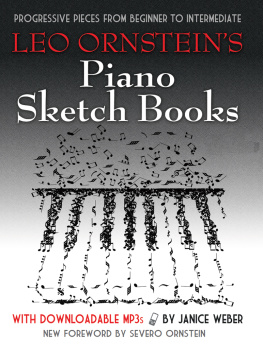


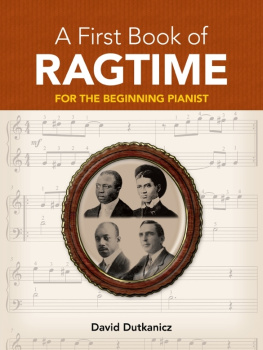



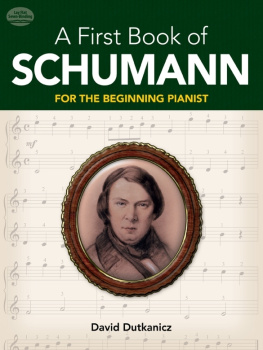

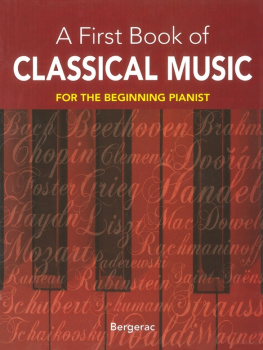

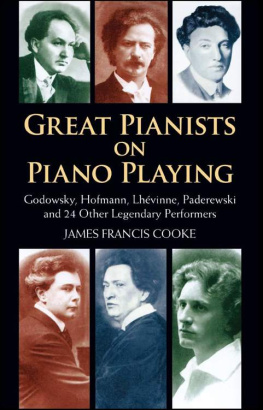
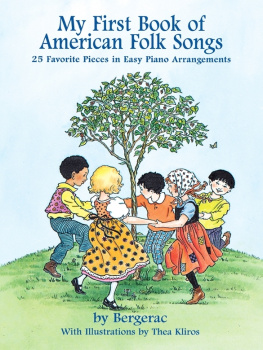
 Copyright Copyright 2014 by The Estate of Leo Ornstein
Copyright Copyright 2014 by The Estate of Leo Ornstein